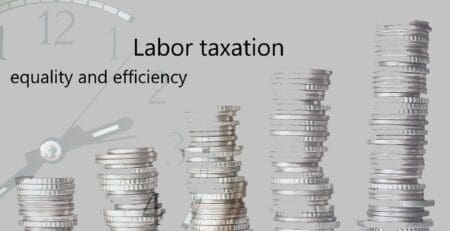Direct monetary financing could save the economy from drowning by Covid-19
As Covid-19 continues to perpetuate uncertainty and maintain ground against the opening up of the economy, direct financial transfers to households and small businesses beyond traditional social protection mechanisms become imperative.
In many developing countries, the rate of direct monetary financing is increasing. For example, in Argentina, Pakistan and Peru, new aid programs cover a third of their population. In the Philippines, more than 70% of households receive financial assistance with emergency transfers precisely through the operation of the direct financing mechanism.
During these budgetary emergencies, central banks have come to terms with the facts and have temporarily begun to act as government “agents” of the financial market by transferring funds on behalf of the government to individuals and businesses. Through this scheme, governments can send direct payments much faster than through listing procedures, checks or tax refunds and deferrals, and have provided the intended relief for a temporary period.
Direct monetary financing allows the government to provide the necessary expenses to save lives with investments for those affected, while assuring the public that they will not be overburdened with future debt repayments. But this financing goes directly to the customer base, which can give that impulse that is missing from the contraction of demand in the domestic and foreign market. It also ensures that the Treasury has access to funds even when markets for government debt absorption are disrupted.
However, if the transfers cannot be made as in the examples above, then a positivity is needed in the Central Bank move to buy government bonds (public debt), because this time the purpose of the purchases is not to stimulate economic activity or help only government.
This pandemic that is making unprecedented demands on the budget and may weaken its ability, but also of the Central Bank to finance them should encourage monetary and fiscal experts, and political and technical debate to say that now is the time for this kind of political.
Although the major obstacle is maintaining the independence of the Central Bank, at this unusual time even its independence does not mean that its reactive approach is a “No” to a request for direct financing of government debt. This particular crisis must and can influence its decision to be able to say “Yes”.
For now, the answer that makes sense in our economy is “Yes.” While they have been announced and acted upon to throw money from the government in the fight against the virus, policymakers do not have to worry about the widespread fear of rising debt. At this time, the central bank can simply buy the debt directly from the government, or otherwise and simply lend to the treasury account.
You cannot actually find such examples of public debt lending in the Balkans. But examples that can be borrowed to adapt to monetary policy can be found from the Bank of England, the Bank of Japan, the US Federal Reserve and the European Central Bank.
For example, the Central Bank of Japan is more advanced with this policy even before the pandemic occurs. It started buying government debt nearly three decades ago with an initial intent to reverse the impact of deflation. Now, it has a larger balance sheet than the Japanese economy itself and owns about 43 percent of the government outstanding debts and has consistently applied its quantitative easing policy.
In the Albanian case, the creation of reserves of money and their distribution for the purposes of pandemic assistance has a barrier and a “fear” that exists in relation to the transfer of this type of power, even temporarily. The current fear is related to the politicians who govern, as this mechanism may serve, among other things, for short-term electoral purposes, leading to market overload and damaging the economy in the long run. The other effect is related to the stimulation of inflation and perhaps in a country where institutional control works intermittently it creates other problems, this problem may be beyond forecasts, upsetting the current balance of macro indicators.
In fact, the balances have been upset and it is only a matter of time before they are declared.
The risk of inflation, although smaller than dealing budget expenditures, should in fact be seen as a little more attractive if we compare it with a greater risk, that of deflation as the effect of the virus is destroying businesses and jobs and consumption that is most important for the economy and continuity.
But this year, when with the issuance of the Eurobond the government has already met the criteria regarding the ability to borrow, then the coordination of fiscal policy with monetary policy needs to be seen face to face. This crisis should already force policy makers to change the rules regarding the level of public debt and increase the capacity to borrow beyond the currently allowed limit.
And in a bad scenario, where the economy will struggle to balance the effect that COVID-19 is creating day by day, the “Japanese” combination of continued fiscal support for the budget while keeping borrowing costs low is a credible decision for Albanian, as it is for the most part of the world.
Perhaps in the near future the non-stop policy of quantitative easing and monetary financing of the economy may be the future of monetary policy in coordination with the fiscal one.
Although in response to this situation, the Bank of Albania has taken immediate measures to support the economy, aiming at “mitigating the negative effects on the well-being of businesses and individuals, as well as creating the premises for a faster recovery of the economy in the following period ”, so far in addition to the historic reduction of the interest rate remains only its willingness to use all operational instruments and regulatory space at its disposal, to minimize the consequences of the pandemic.
In reality, time is unusual and only usual politics is not enough. Even the measures of the government at the beginning of 2020 were not enough.
Although the government has expressed readiness to respond to the pandemic crisis with packages and decisions, they are facing various challenges. Often, the complexity of public funding programs and the guarantees given to lending to the economy through the budget has been accompanied by uncertainty and a slowdown in the speed with which businesses and citizens must receive money. Small and medium-sized enterprises and individuals express concern that the payment of relief to cope with the crisis takes too long. Failure to meet these challenges exacerbates the macroeconomic effects of the crisis and reduces the ability to provide the economy and affected citizens with what they need. There is a risk that not addressing these challenges quickly and properly may contribute to the onset of social unrest.
However, the crisis should mark a shift in the relationship between governments and central banks. Blurring the boundaries between the two, even through direct funding or quantitative easing, requires them to coordinate their actions much more closely.
If the economy continues to deteriorate due to the pandemic it would be worthwhile to see the central bank decide on direct financing of public debt. Perhaps this will come as a policy forced by the deteriorating economic and social environment itself. In the worst case, it will be necessary to create the legal and logistical infrastructure, even though countries like Albania do not yet have clear experience and commitment in this regard.
Maybe it’s just a matter of time.




Leave a Reply
You must be logged in to post a comment.